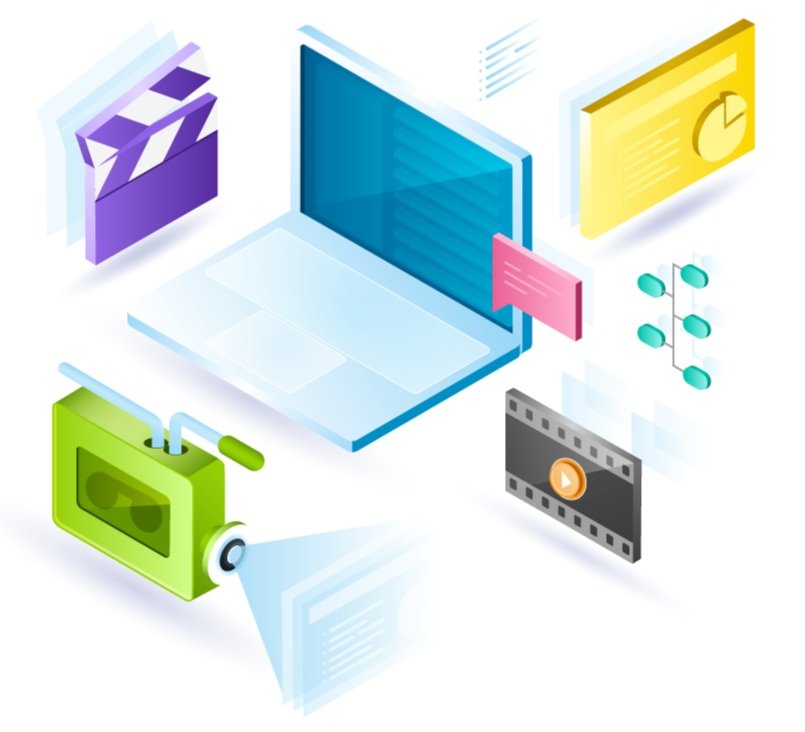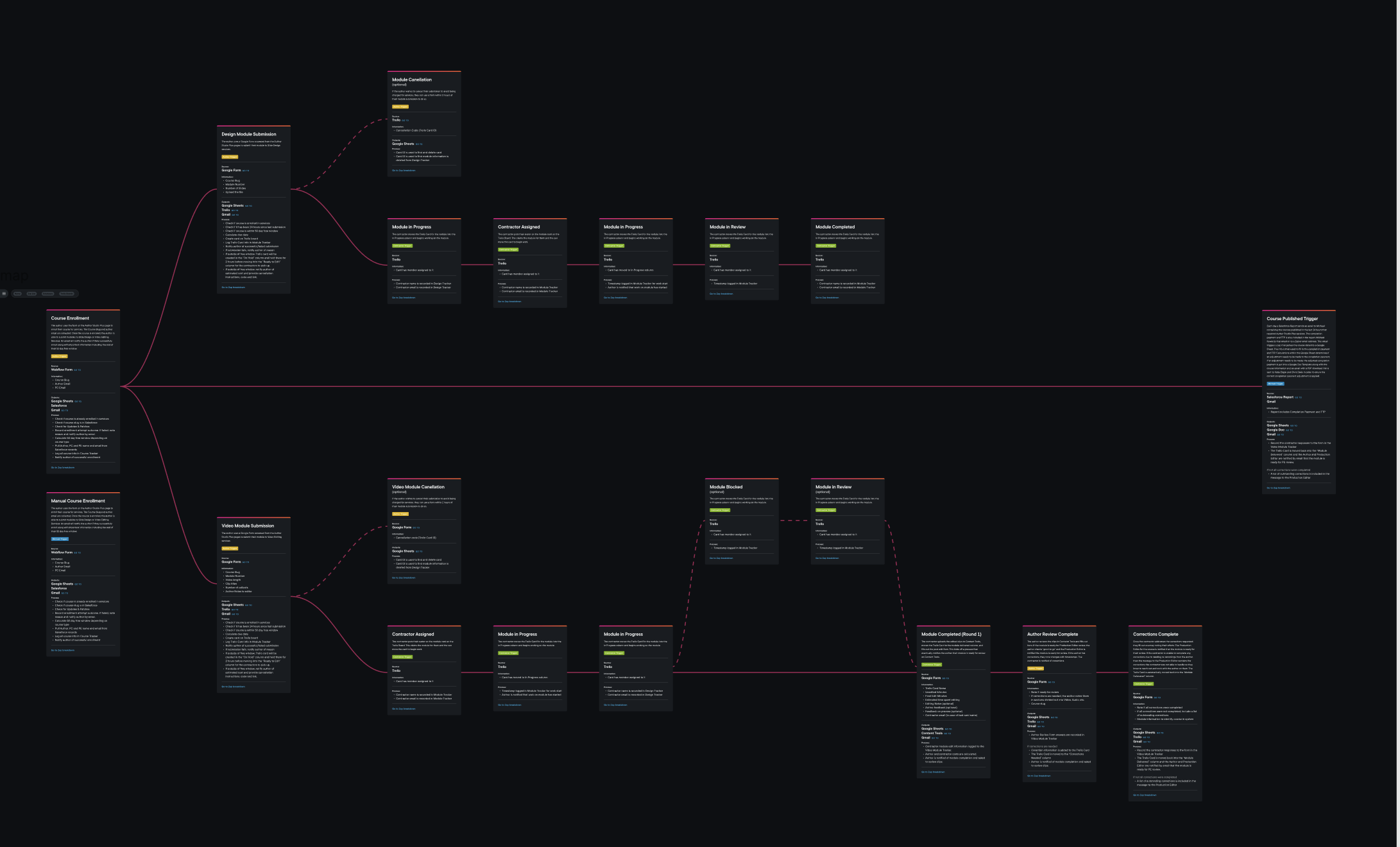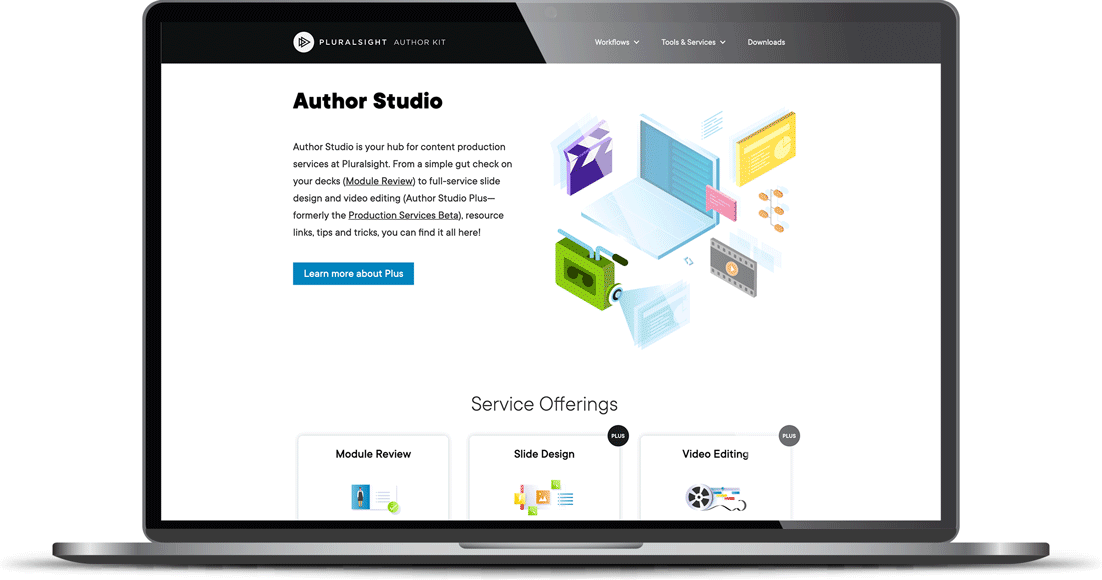
Author Studio


Author Studio
Problem: Pluralsight authors wanted (and needed) assistance with producing video courses. Our internal team of designers and video editors did not have the capacity to support all authors.
Solution: We created a scalable production service program that pairs authors with professional designers and video editors to alleviate pains in creating video courses.
Deliverables: UX, UI, Illustration, Systems

Discovering how to ease the course production burden
In 2018, I really wanted to dig into the experience of our third-party authors through the course creation process. With the help of my team, I conducted interviews with our authors to record their processes and identify pain points along the way.
I conducted interviews with multiple cohorts of authors - veterans, first time authors, and authors who started but never completed a course. I focused conversation on pain points and how Pluralsight could ease those burdens.
I did my own personal synthesis of the data from these interviews as well as a larger group synthesis. This resulted in a journey map, and gave us insights into areas we could improve the process. We knew we needed to offer more production help, but in a scalable way without disrupting our small team.
We then outlined a content submission system where contracted designers and video editors, vetted and trained in Pluralsight’s brand standards, offered help to authors for slide design and video editing services.

Beta to general release
During the beta period of this service offering, I designed landing pages and a form submission system for authors to submit slides and videos to our designers and editors. I also sourced and trained the design contractors to work in the Pluralsight standards that had the availability we needed. I still manage this team of contract designers today.
Phase 1: Manual Submission
The original workflow involved adding authors to a Trello board and having them create their own requests using a Trello card template we set up. Authors were familiar with Trello, but for some it took a lot of guiding to help navigate them through it. While the end result (designed slides and edited video) was meeting expectations, we quickly searched for a less manual system that alleviated work for us and for our authors.
Phase 2: Automation

Team members and I worked collaboratively to build a system that not only recorded valuable data, but triggered emails and prompts for next steps for authors and contractors. Because this was still technically a prototype, my colleagues and I did a few exercises to map out a workflow. What we achieved (without developers) ended up being a mix of Zapier triggers and automation connecting Salesforce, Webflow, Trello, and Google Forms. Authors could now submit their content through a form, receive email updates, and designers and video editors would receive the requests on a private Trello board. This eliminated the need for authors to interact with Trello at all and gave us clean, trackable data.
Phase 3: General release
After two years of testing, we rebranded our system as “Author Studio” and moved it into general release. Author Studio continues to provide valuable services to Pluralsight authors, and we continue to iterate on it to make it better.
In an ideal world, we would integrate this system into the Pluralsight Author Home platform so authors could access it in their main content submission system.

Continuous discovery and challenges
I’ve continued to do interviews with participating authors to ensure that we’re still providing a valuable service and help identify areas for improvement in the future.
Marketing initiatives
Due to the nature of course creation, there is often a long gap between courses for Pluralsight authors. realized that authors needed reminders that Author Studio services are available to them. I’ve worked with our author communications team to run periodic but regular marketing pushes to raise awareness for the program. This includes blog posts, explainer videos, Slack ads, Appcue surveys, and soon audio podcasts.
Branding and illustration style
Along with the system, I was able to develop an illustration style specific to Author Studio. I used imagery that was specific to slide design and video editing, and created a variety of isometric and front facing illustrations. All are “floating” with the idea that they could be animated. The illustrations are colorful, visually descriptive, and break up the information on the page in a fun way.


Conclusion
This was my first time leading a discovery-based research project. I learned about crafting questions, interviewing techniques, and how to analyze qualitative data to help guide decisions around product designs. I was able to collaborate in building a product from its initial ideation phase to general release. I’ve learned how to work with cross-functional teams, and I have learned how to work through roadblocks along the way. I was able to flex my illustration and branding skills to enhance the digital experience. I also got the chance to do some internal marketing for the product to build awareness amongst our authors.
Author Studio is still very much a work in progress, but it has been an incredible learning experience.
